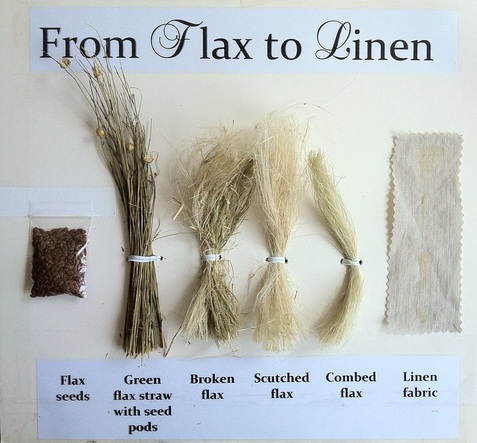Week 8: Flax and Alpaca Wool
Flax is grown on a large scale in Western Europe. There is about 100 days between planting and harvest. Harvesting flax is in June and the flax plant only blooms for one day. While harvesting it is uprooted instead of cut because the fibers go all the way through the roots. There is a retting stage where the flax plant is laid out collect moisture that helps break down the fibers that keep the plant together. Scutching and Hackling is the next process where they take the flax by hand and work the fibers out in order to get it to be a very fine texture. From there it is spun in to flax yarns. Flax is turned into linen fabric which is used for many different things. Linen can be sold straight from the loom without being treated.
 | ||
| This gives us a visual of what the flax looks like at the beginning and how it changes with each step. The video I watched about wool came from Alpaca instead of Sheep like I am used to looking at. First step is the shearing where they shave the animals and separate the fiber colors and then go on to separating the long fibers and the short staple fibers. Washing the hair is next, and if the hair gets agitated in the washer then it cannot be used, but there are special dryers made to be able to wash this wool. The wool is dried through a rack and a fan. The dehairer removes the unwanted fibers, taking the bad coarse hairs out of the batch. The carder is called the heart of the mill because it separates individual fibers and align them together and from there it combines them together.
Fibers are turned into yarn and yarn is weaved into fabric. Fabric is then chosen by Interior Designers to use at upholstery, rugs, drapery, etc. Knowing how it is made and how much time is put into it can really help inform us as we go into this major. We will know what we are talking about when it comes to fabric fibers and knowing what their pros and cons are to each fabric. https://www.youtube.com/watch?v=-ZrZZefkohE https://www.lifegivinglinen.com/flax-to-linen-display.html https://www.youtube.com/watch?v=plC_7rfMg3s |


Comments
Post a Comment